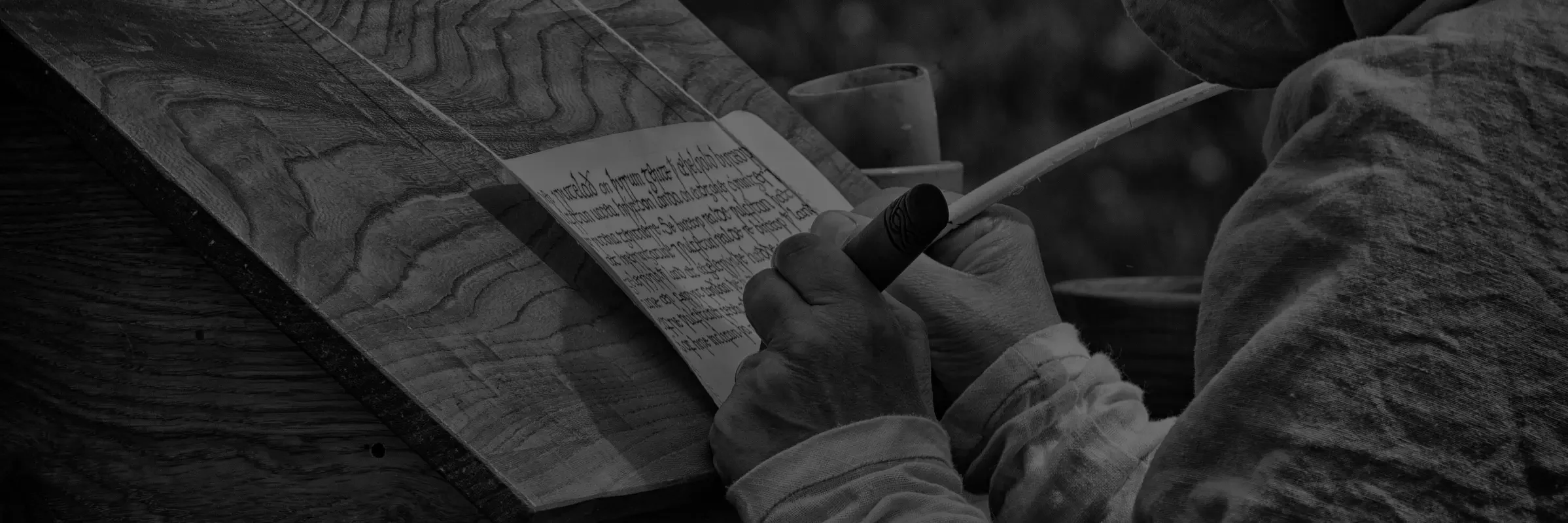Wirral's Hidden History Revealed
History and Heritage Fair – Brunanburh

In 937 at Brunanburh, The Army of Mercia – led by King Athelstan faced the combined forces of Ireland – led by King Anlaf, Scotland – led by King Constantine and Strathclyde – led by King Owain ap Dyfnwal. The site for this battle is hotly contested but Wirral Archaeology CiC, and several other recognised historians, firmly believe that it took place on the Wirral.
Battle of Anglesey Sound
Magnus Barelegs and the Vikings in Anglesey and the battle of Anglesey sound 1098 AD
Following the Norman conquest of Anglo-Saxon England in 1066, there is a mistaken belief that Viking activities ceased in the British isles. In Scotland, the Viking age can be said to have come to its final end, following the battle of Largs in 1263.
The Battle of Cynwit
The defeat of Ubba Ragnarsson and the Vikings
The battle of Cynwit is a little known engagement yet it was important for a number of reasons.
Ubba Ragnarsson, son of the legendary Ragnar Ladbrok and brother to Ivar the boneless, Halfdan Ragnarsson, Sigurd snake in the eye, Hvitserk and Bjorn Ironside, landed with an army in Devon. The Vikings are said to have arrived in a fleet of 23 ships and to have numbered 1200 men.
Viking – Military Tactics
Viking, Norsemen, Danes, a fierce pagan people who in the late 8th century began to raid the British Isles, Western Europe and the Mediterranean and who terrorised both the Christian and Muslim peoples of the civilised world.
Varangian Guard
The Eastern Roman Empire’s Elite mercenary fighting force of Vikings and Anglo Saxons
The Battle of Stamford Bridge
The first recorded Viking attack on England occurred in 793. Some 273 years later, after endemic warfare, dynastic changes, a merging of Anglo Saxon and Norse culture and the triumph of the Christian Church over paganism, the Viking age In England effectively came to a bloody and dramatic end at great battle of Stamford Bridge.
The Battle of Maldon
An act of heroic honour or gross stupidity?
The battle of Maldon, August the 10th or 11th, 991
Athelstan’s victory in 937 at Brunanburh, did not remove the Viking threat and after the king’s death, his successors, Edmund the 1st and Eadred had to deal with several Viking attempts to re-establish their rule in York and Northumberland. Anglo Saxon England did not become reunified until 954 when Eadred finally established full control.
The Battle of Buttington
Anglo Saxons attack a Viking army outside of Welshpool
Today, Buttington, or Tal y Bont, is a small village on the outskirts of Welshpool in mid Wales on the border with Shropshire. The tranquil fields and beautiful surrounding countryside give no hint that a once deadly battle took place here, between the Anglo Saxons, led by three Ealdormen , namely Ethelred, Aethelhelm and Aethelnoth and a force of Vikings, part of a much larger army led by the legendary Viking warrior, Hastain.
Pre Brunanburh – Irelands Political Situation
We’ve referred to Anlaf’s great enemy in Ireland in previous assessments, namely Muirchertach Mac Neill. As we know, Anlaf had defeated the Vikings of Limerick just weeks before he left for England in order to challenge Aethelstan, but going back to 925 AD the Dublin Vikings had suffered a major defeat at the hands on Muirchertach at the battle of Carlingford. This battle was not only a significant defeat for the Dublin Norse but resonated throughout Ireland because Muirchertach slaughtered several hundred Vikings who had surrendered to him. Anlaf’s father Gofraid, had led the Dublin Norse into battle. He, somehow, had managed to escape.
Owain the First
Owain Ap Dyfnwal was a Northern British King who fought alongside Anlaf Guthfrithson and Constantine of Alba at the battle of Brunanburh in 937 AD.
He was king of Strathclyde, a kingdom of indigenous Britons, who’s Kingdom was formed during the post Roman period when the ethnic groups of the British Isles fought to create independent countries during a period of political instability and foreign invasion.
Egil Skallagrimsson
Egil Skallagrimsson was as Icelandic Viking who fought for the Anglo-Saxons at the battle of Brunanburh in 937 AD.
He appears to have had an adventurous life, but his life story, recorded by a relative, namely one Snorri Sturluson, over 200 years after the event’s of Egil’s lifetime, is embellished and as is typical with many of the Viking saga’s needs to be taken with the proverbial pinch of salt
Cwichelme’s Hlaew
After the battle of Maldon in 991, an English defeat, the Anglo Saxon chronicles recorded an arrogant English boast that if invading Vikings ever reached ‘ Cwichelme’s Hlaew’ , now Cuckhamsley Hill on the Berkshire downs, that they would never, ever make it home again.
Berserkers
Amongst many of the sagas, including that of the Norse Kings, a class of warriors are exalted and feared above all others. These were the Berserkers (Bersirkir in old Norse). Sometimes they were also referred to as ‘wolfskins’ (Ulfhednar).
Battle of Largs
On the 2nd of October 1263, on the banks of the firth of Clyde in what is now North Ayrshire, the last Norse Viking army to invade mainland Britain was defeated by the Scots. The age of the Vikings was over!
The Viking’s last battle on British soil.
Battle of Ethandun
The battle of Ethandun or Eddington was fought in the year of 878 AD, between the 6th and 12th of May. I have referred to it as Alfred’s the Great’s last stand because defeat would have led to the last bastion of Anglo Saxon rule, the Kingdom of Wessex, being destroyed and would have left the whole of what is now England under the control of the Vikings.

